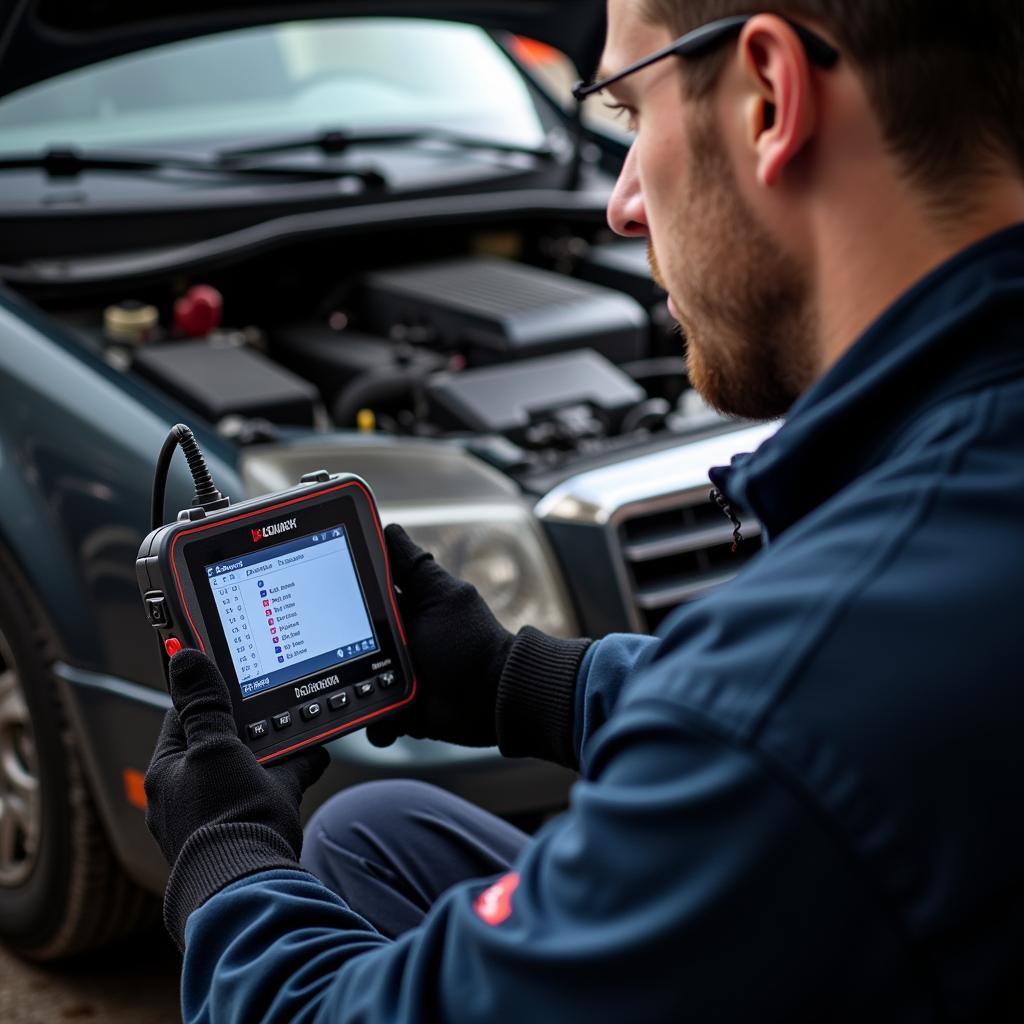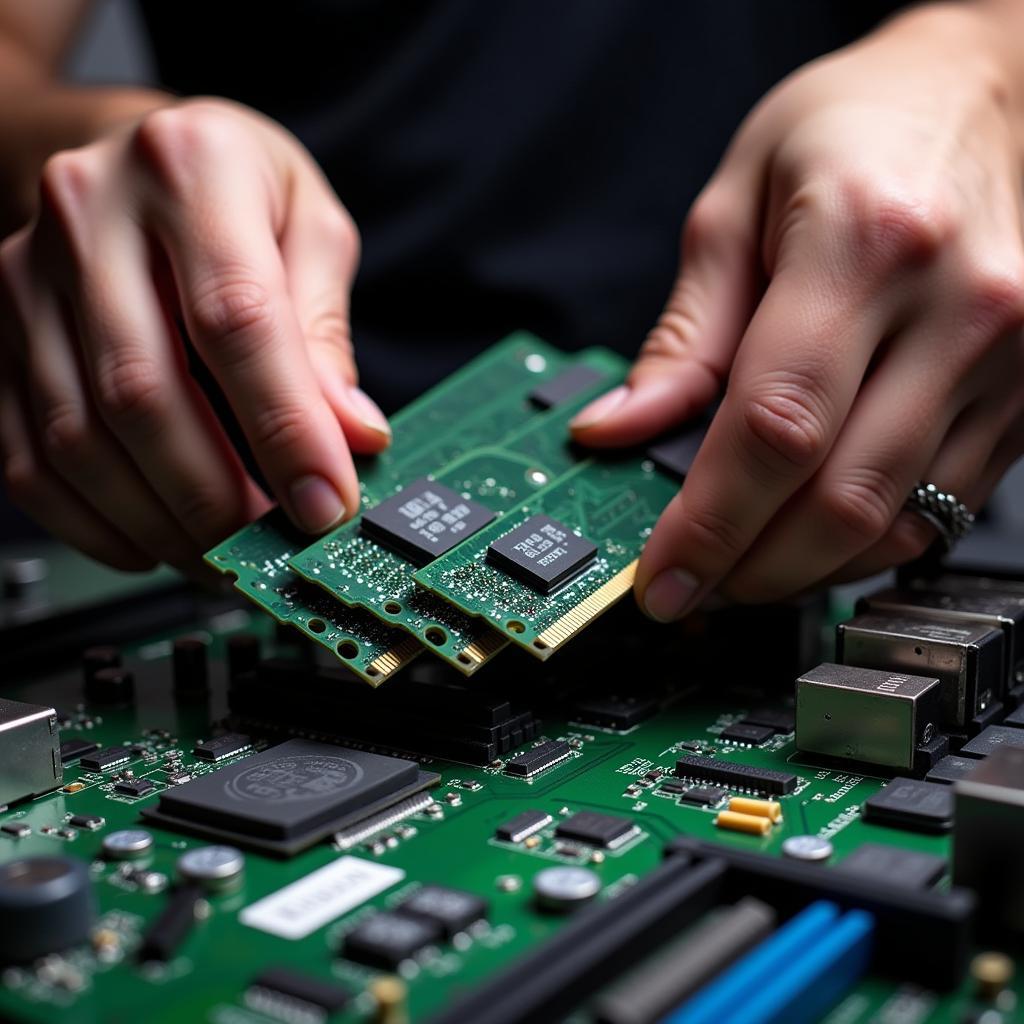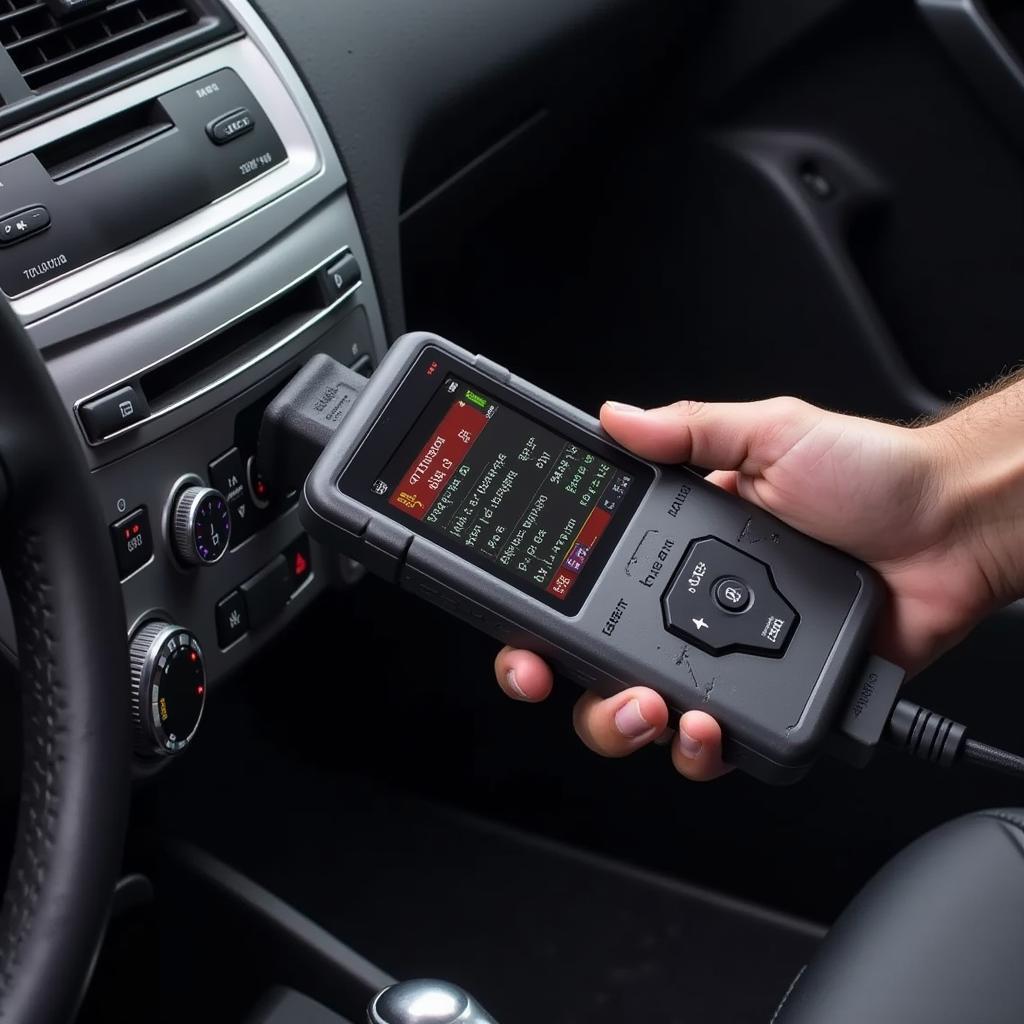Crane Equipment Diagnostics Tools are indispensable for modern crane owners and operators. These powerful devices provide an in-depth look into the inner workings of your cranes, allowing you to identify and diagnose issues quickly and efficiently. Whether you’re managing a fleet of tower cranes or a single mobile crane, having the right diagnostics tool can dramatically reduce downtime, optimize performance, and extend the lifespan of your valuable equipment.
Understanding the Importance of Crane Equipment Diagnostics
Gone are the days of relying solely on visual inspections and guesswork to troubleshoot crane problems. Crane equipment diagnostics tools provide real-time data and insights, enabling proactive maintenance and reducing the risk of costly breakdowns. By analyzing the information provided by these tools, you can:
- Pinpoint the Root Cause of Faults: Diagnostics tools can identify the specific sensor, component, or system causing an issue, eliminating unnecessary guesswork and part replacements.
- Minimize Downtime: Quick and accurate diagnostics mean faster repairs, getting your cranes back to work sooner and reducing revenue loss.
- Optimize Performance: By monitoring key parameters like engine performance, hydraulic pressure, and load moment, you can identify areas for optimization and ensure your cranes operate at peak efficiency.
- Extend Equipment Lifespan: Proactive maintenance based on diagnostics data helps prevent minor issues from escalating into major problems, extending the lifespan of your cranes.
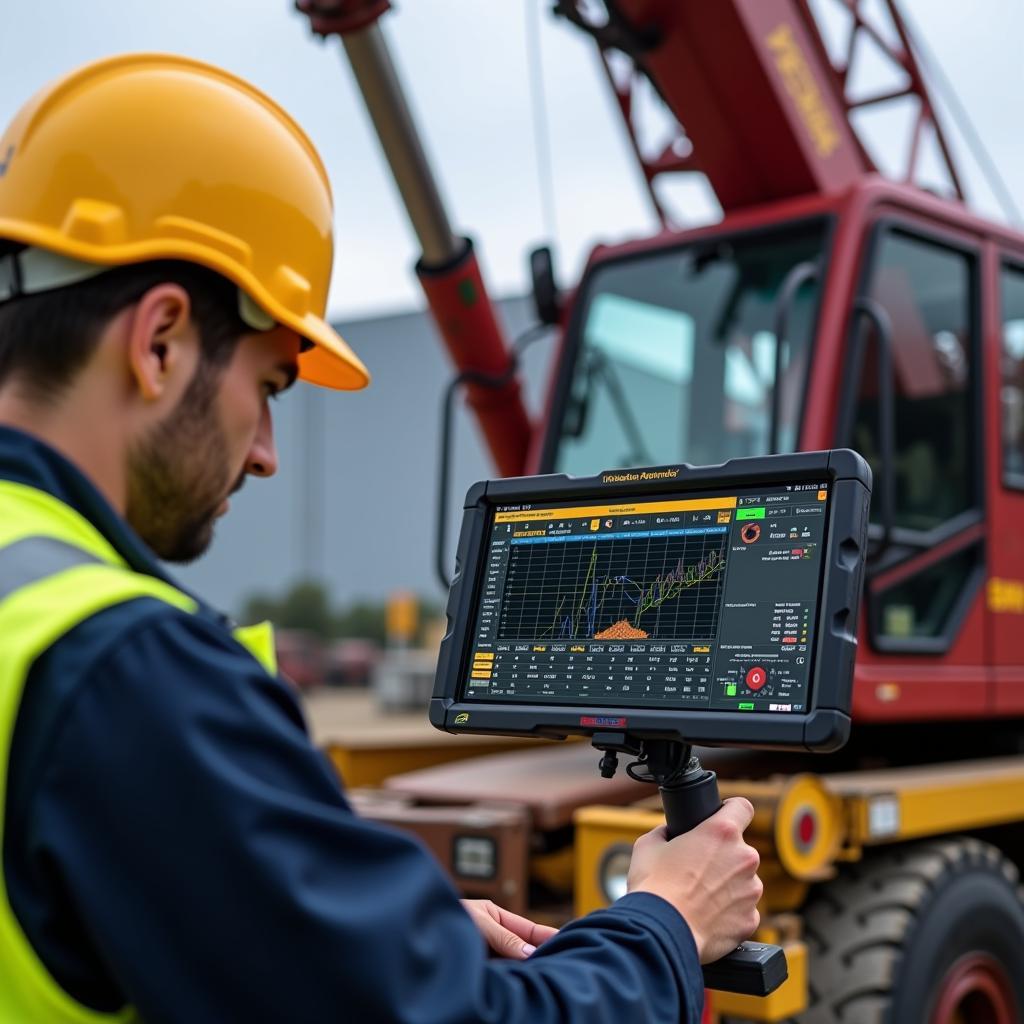 Crane diagnostics tool in use
Crane diagnostics tool in use
Key Features to Look for in a Crane Equipment Diagnostics Tool
Not all crane equipment diagnostics tools are created equal. To maximize your investment, look for a tool that offers:
- Comprehensive Coverage: Ensure the tool supports the makes and models of cranes in your fleet and covers a wide range of systems, including engine, hydraulics, electronics, and safety systems.
- User-Friendly Interface: An intuitive interface with clear visuals and easy-to-understand data displays is crucial for quick and efficient diagnostics.
- Real-Time Data Monitoring: The ability to monitor live data streams from various sensors allows you to observe crane behavior during operation and identify potential issues before they escalate.
- Fault Code Library: A comprehensive database of fault codes and their descriptions helps you understand the nature of the problem and guide the troubleshooting process.
- Data Logging and Reporting: Data logging capabilities allow you to track performance over time, identify trends, and generate detailed reports for analysis and maintenance planning.
Choosing the Right Crane Equipment Diagnostics Tool for Your Needs
Selecting the right diagnostics tool is crucial for maximizing its benefits. Consider the following factors:
- Types of Cranes in Your Fleet: Ensure compatibility with the makes and models of cranes you operate.
- Age of Your Equipment: Older cranes may require specialized diagnostic interfaces or software.
- Budget and Features: Determine your must-have features and balance them against your budget constraints.
- Technical Expertise: Consider the technical proficiency of your team and choose a tool that aligns with their skill level.
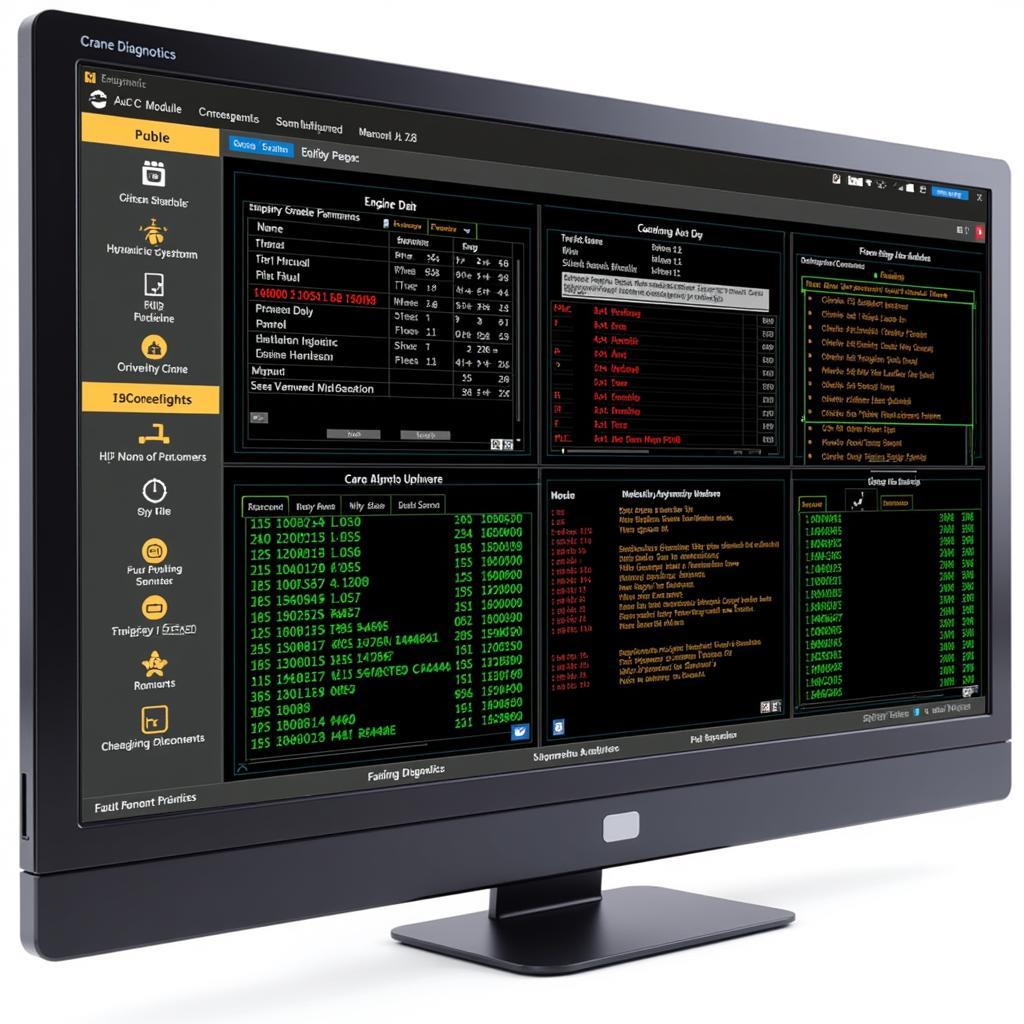 Crane diagnostics software interface
Crane diagnostics software interface
Benefits Beyond Diagnostics: Predictive Maintenance and Beyond
Crane equipment diagnostics tools offer benefits beyond traditional troubleshooting. By leveraging the data collected, you can implement predictive maintenance strategies. This proactive approach involves analyzing historical data and performance trends to anticipate potential failures before they occur. By scheduling maintenance based on actual equipment needs rather than arbitrary intervals, you can:
- Reduce Unplanned Downtime: Address potential issues before they lead to unexpected breakdowns and costly repairs.
- Optimize Maintenance Schedules: Minimize unnecessary maintenance tasks and costs by focusing on actual equipment needs.
- Extend Equipment Lifespan: Proactive maintenance helps identify and address minor issues early on, preventing them from escalating into major problems and extending the operational life of your cranes.
Investing in Your Crane Fleet’s Future
Crane equipment diagnostics tools are no longer optional extras but essential investments for any crane owner or operator. These tools empower you to move from reactive to proactive maintenance, minimizing downtime, optimizing performance, and extending the lifespan of your valuable equipment.
“Investing in a quality crane diagnostics tool is like having an x-ray vision for your cranes,” says John Miller, a senior crane technician with over 20 years of experience. “You can see what’s going on inside, diagnose problems quickly, and keep those cranes running smoothly.”
By embracing the power of diagnostics, you’re not just fixing problems; you’re investing in the future of your crane fleet.
Ready to take control of your crane maintenance and unlock maximum uptime? Contact ScanToolUS today at +1 (641) 206-8880 or visit our office at 1615 S Laramie Ave, Cicero, IL 60804, USA, to explore our range of crane equipment diagnostics solutions.
Frequently Asked Questions
1. How often should I use a crane equipment diagnostics tool?
It’s recommended to use a diagnostics tool for regular inspections, troubleshooting, and before and after major lifts. Frequent use can help identify potential issues early on.
2. Can I use a crane equipment diagnostics tool myself, or do I need specialized training?
While some tools offer user-friendly interfaces, basic training is recommended to interpret data accurately and utilize the tool’s full potential.
3. Can crane equipment diagnostics tools be used on all types of cranes?
Diagnostics tools often specialize in certain types or brands of cranes. Ensure the tool you choose is compatible with your fleet’s equipment.
4. How can diagnostics data help me optimize crane performance?
By analyzing parameters like engine load, fuel consumption, and operating temperatures, you can identify areas for improvement and adjust operating practices for maximum efficiency.
5. Are crane equipment diagnostics tools a worthwhile investment for small businesses with limited budgets?
Even for small businesses, the long-term benefits of reduced downtime, optimized maintenance, and extended equipment lifespan often outweigh the initial investment cost.

